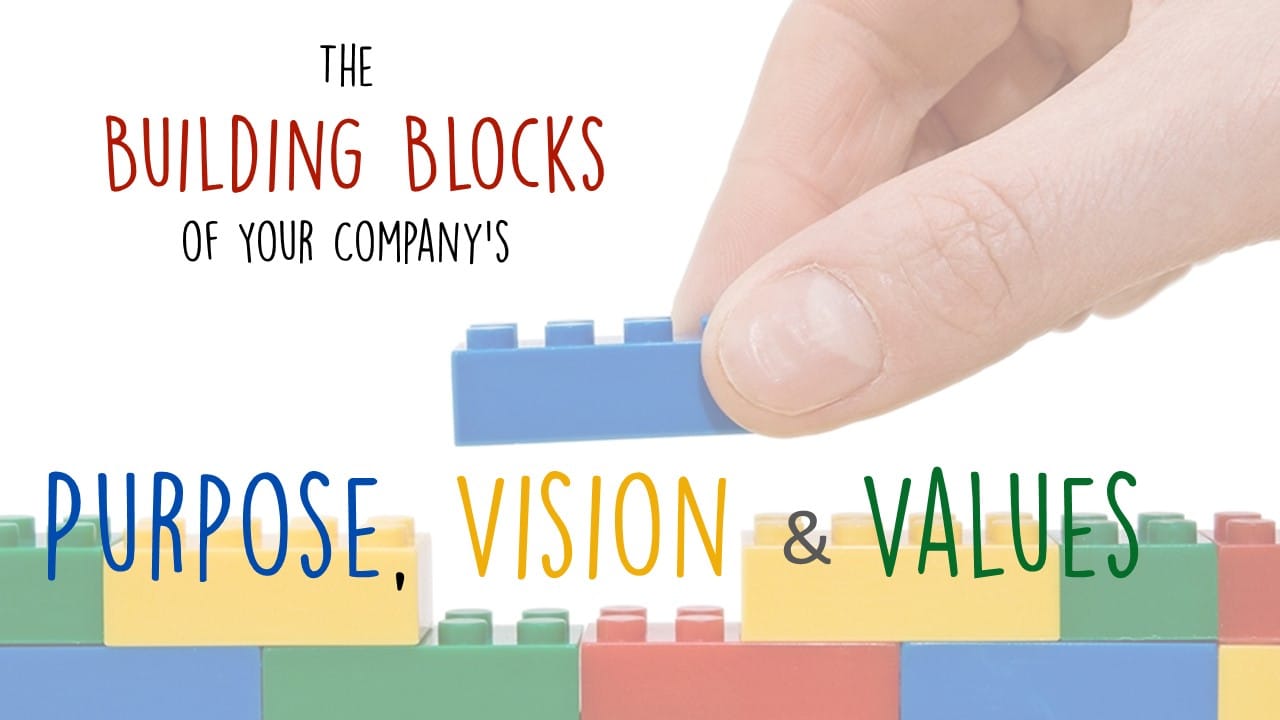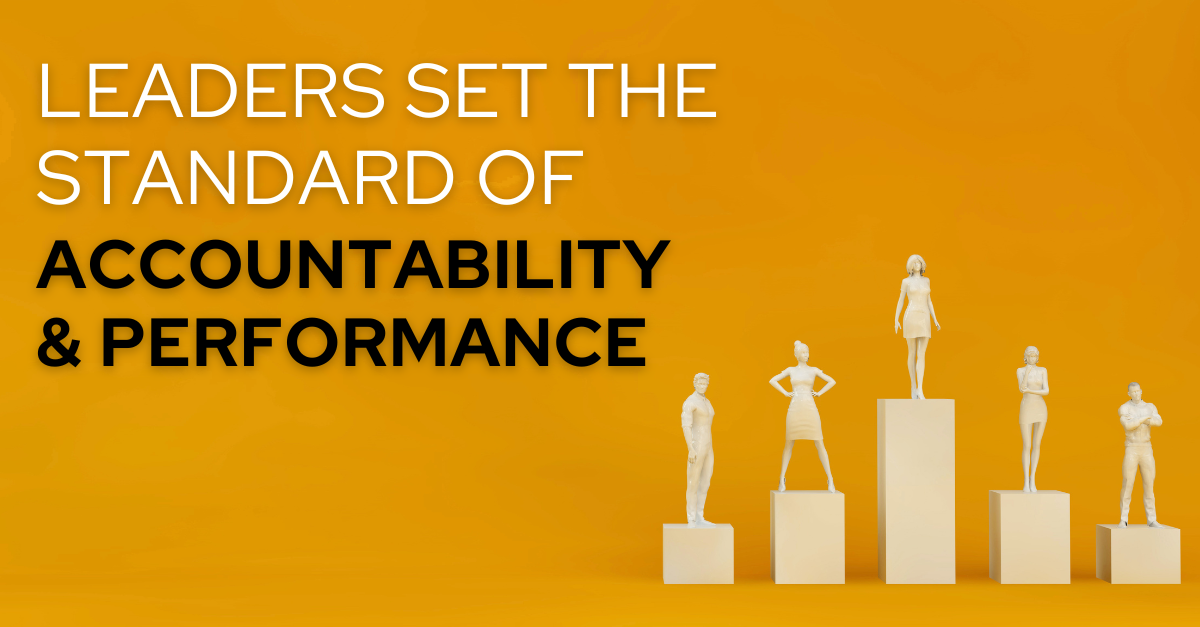When an organization’s purpose, vision, and values live only on its office walls, it’s impossible for that organization to be any better than mediocre. The companies that stand out, and that are rockin’ their industry, have their purpose, vision and values tattooed on the hearts of their employees (not forcibly, of course 😊). In other words, their purpose, vision, and values actually shape the culture of their organization and literally change their people’s behaviour.
Corporate mission, vision and values statements that actually make a difference are:
- based on the input of many, not just the C-suite;
- inspiring;
- memorable; and,
- incorporated into virtually every aspect of work life.
Last week I facilitated a day-long workshop for a client to help them discover their company’s mission, vision, and values. It was an intense but rewarding experience by all accounts. I’m happy to share my methodology (and some slides) with you.
Building Blocks
All three guiding documents (purpose statement, vision and values) are comprised of a few central elements each. Any one of those elements can be inferred, they don’t necessarily need to be stated directly, but they need to come through loud and clear. Discovering those key elements that are unique to each individual company is 90% of the battle.
I lead focus groups through a series of exercises to identify the central elements of each guiding document. Word-smithing the final product is done later in a less time-sensitive setting.
Purpose (formerly known as “mission statement”)
The term “mission statement” feels very 90’s to me. I prefer the term “purpose”, so let’s go with that.
An organization’s purpose is a statement of WHY the organization exists. But before you say “my company exists to make a profit”, let me interject and say that making a profit (for the company itself) is NEVER a company’s purpose. Financial results are the results, not the beginning. All organizations sprang up from a need in society that wasn’t being met. Meeting that need is their purpose. And besides, if you want to stamp out any inspirational value that a statement of purpose might have, just tell people that their purpose is to make a profit for the company (generally interpreted as “making other people rich”).
A company’s purpose is a function of three elements:
- WHAT we do;
- for WHOm; and
- WHY we do it
Here’s a famous example.
Steve Jobs’s mission statement for Apple in 1980 was: “To make a contribution to the world by making tools for the mind that advance humankind.”
- WHAT = tools for the mind. Note that it’s not “we make computers”. Not only is “tools for the mind” more inspiring, but it’s also broad enough to allow Apple to offer more products than just computers.
- WHO = the world.
- WHY = to make a contribution that advances human kind.
Nailing your purpose is critical, because purpose acts as both rudder and engine. It sets the direction and is the catalyst of sustainable forward momentum.
[bctt tweet=”Purpose acts as both rudder and engine. It sets the direction and is the catalyst of sustainable forward momentum.” via=”no”]
Vision
An organization’s vision should use words to paint a specific, compelling future—a picture that should project at least 10 years into the future. When companies aim for a shorter time-frame, people begin to think tactically and “realistically.” You might think that’s a good thing, but the problem with thinking shorter term is that your vision becomes limited to your current reality—technology, market conditions, customer desires, the organization’s capabilities—not what will be possible in 10 – 30 years. The result is often uninspiring and therefore does not have the capacity to catapult the organization to the position of industry leader.
A great vision consists of three elements:
- Core Ideology – the most central, defining character of the organization.
- An Audacious Goal – one that’s so specific that it requires little explanation, and one that instantly provokes the imagination.
- Vivid description – painting a picture of the future with words.
Henry Ford helped shape the future we now live in when he announced the following vision at the turn of the 20th century:
“I will build a motor car for the great multitude…. When I’m through, everybody will be able to afford one, and everyone will have one. The horse will have disappeared from our highways, the automobile will be taken for granted…[and we will] give a large number of men employment at good wages.”
The three elements are:
- Core Ideology – democratization of the motor car
See if you can fill in the following two blanks:
- Audacious Goal – __________________________
- Vivid Description – _________________________
Values
Strongly held corporate values serve to broadcast to the entire organization what’s in-bounds and out-of-bounds when making decisions. When woven into the fabric of the culture, corporate values act like bowling lane bumpers which are designed to keep bowling balls from falling into the gutters (aka “bad decisions”).
Most corporate values include motherhood statements like “integrity”, “fairness”, “respect”, “socially responsible”, bla, bla, bla. As Enron and other corrupt companies who espoused similar values have taught us, motherhood statements don’t change behaviour. Values only have the power to change behaviour if they are:
- Meaningful – directly related to the mission and vision of the company.
- Difference Makers – the behaviours that truly differentiate expected performance (like “integrity”) from truly exceptional performance (like “fanatical attention to detail”).
- Memorable – three to five values that are constantly being clarified and reinforced in everyday work-life.
- The Decision-Making Criteria – the first criteria used by everyone in the organization to evaluate virtually every decision.
Values that form the core of the organization’s culture replace a thick employee policy manual because they clarify expected behaviour in virtually all circumstances. They allow managers to share control and empower their staff because they can trust that their staff will make decisions based on the same criteria the manager would.
For most of Walt Disney’s corporate existence, their mission was simply “We create happiness.” The following five values guided each employee’s decisions to help them achieve their mission:
- No cynicism
- Nurturing and promulgation of “wholesome American values”
- Creativity, dreams, and imagination
- Fanatical attention to consistency and detail
- Preservation and control of the Disney magic
Few companies have been able to consistently achieve such a lofty mission for the better part of a century. Whether watching a Disney movie with my family or spending a day at one of their theme parks, my experience with Disney has validated that they operate (for the most part) on those five values.
The Ultimate Litmus Test
Answer these two questions:
- Do you honestly believe that your purpose, vision and values are inspiring, memorable, and clearly demonstrated by your staff and the way you all operate?
- Do they differentiate your organization from others in your industry?
If you can’t answer yes to both, then you’re missing the genesis of how you can become an industry leader, and a truly exceptional organization.
_____________________________________________________________________________________






2 Responses
I appreciate this information Michael. I am a Financial Advisor in Utah who handles about $50 million in Assets. I do only have one employee, but I see how her being part of the “Purpose” “Vision” and the development of them can be rewarding to our relationship and make her feel more that she is part of something. I do have a question about this however. Since I don’t have, and will never have more then a couple of employee’s is there a way (or do you think it’s appropriate) to have my “purpose” or “vision” where my clients can see it so that they know what we are about? I would love your feedback on this.
On a side note, I truely believe as a father of 3 with one on the way, that the inplimintation of the things you spoke of could greatly benefit family dynamics and have my children feel more involved, and my spouse and I be on the same page.
As always, thanks for your amazing insight and knowledge Michael!
Absolutely Mackinlay, having your purpose, values and vision posted for others to see is a great idea. For example, ING’s purpose is “Empowering people to stay a step ahead in life and in business.” The purpose of IAG is “To help people manage risk and recover from the hardship of unexpected loss”. Both of those are inspiring and provide guidance.